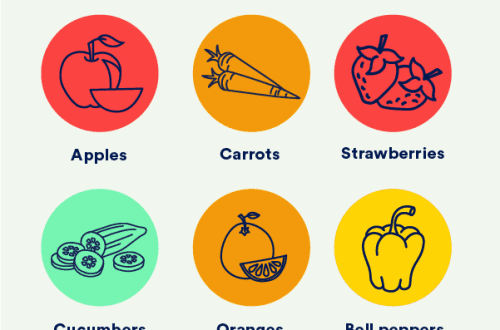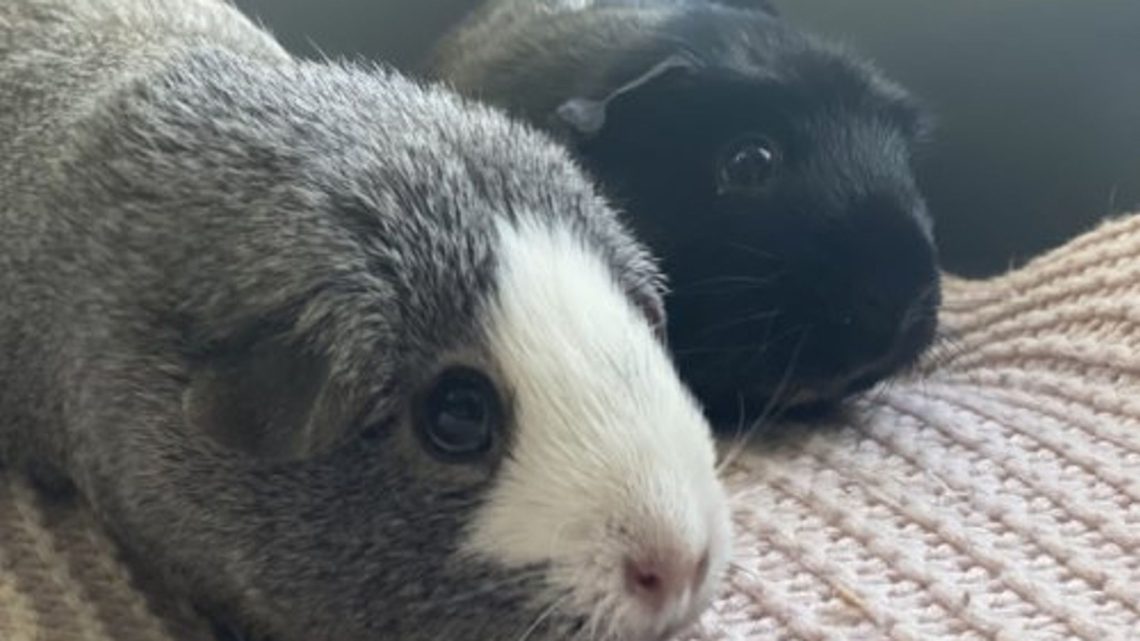
Where do guinea pigs live in the wild, the homeland and natural habitat of the rodent
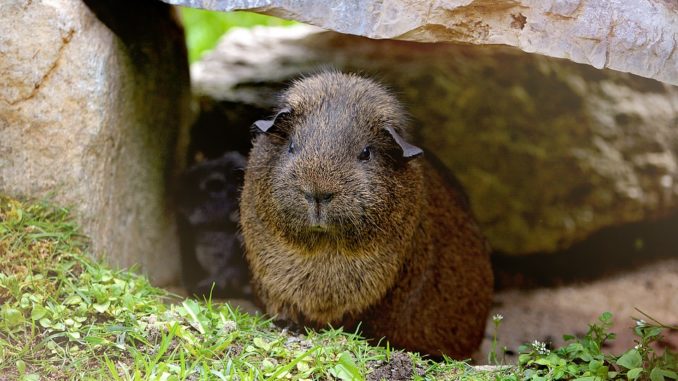
Guinea pigs have long gained popularity as pets, but few people know about their origin. To better understand these cute furry animals, it is worth knowing where guinea pigs live in the wild, as well as the behavior of this species.
Contents
homeland of guinea pigs
The natural habitat of guinea pigs is South America. Rodents were first described by Christopher Columbus. These small animals with brownish fur looked like rabbits, and the locals willingly ate their delicious meat. The homeland of wild pigs is Peru and Chile, over time, the area of uXNUMXbuXNUMXbits settlement on the mainland has greatly expanded. Now these rodents can be found in many countries of the continent, such as Argentina, Brazil, Venezuela, Colombia. The animals live in forests, in the savannah, in sandy and rocky areas, where they hide behind stones to escape from predators.
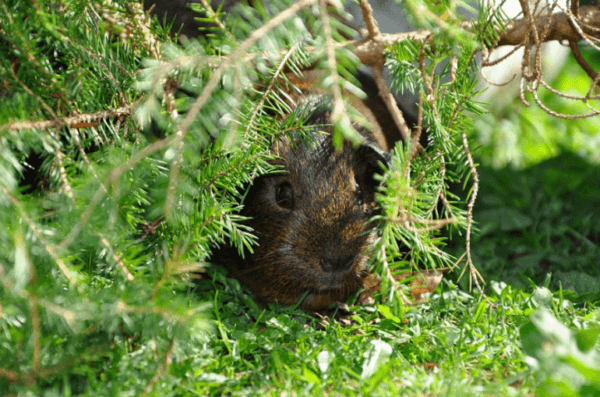
Real name
In biology, guinea pigs have the Latin name Cavia, which combines several subspecies of South American rodents. The closest species to the domesticated decorative pig is called kui. The “guinea pig” has already become in Europe – that’s how the Germans called cute, pig-like animals brought from across the sea, then the Poles adopted this name, and from them the Russians. The British call guinea pigs “Guinean” – this definition of a common noun refers to any phenomenon from exotic countries.
Appearance
The wild guinea pig outwardly differs slightly from the proportions of its domesticated relatives that are familiar to us. The body of the Cavia is smaller and lighter, looks more elongated, and the legs are also longer. The skeleton of the animals is light and strong, so they rarely get fractures even after falling from a height. Wild cavia are strong, agile, run fast, able to jump, even climb ledges, dig shelters in the sand. This is a lively and nimble animal, instantly breaking away at the sounds of danger, with sufficient endurance to overcome long distances.
The coat color of wild pigs differs most noticeably – forest dwellers cannot boast of such bright fur coats as their domesticated counterparts. Cavia’s coat is brownish or grayish with a reddish color, this color helps them hide from enemies in the savannah, go unnoticed even by the keen eyes of birds of prey. The peculiarity of wool allows animals to endure extreme heat up to 45 degrees, and also survive when it gets cold.
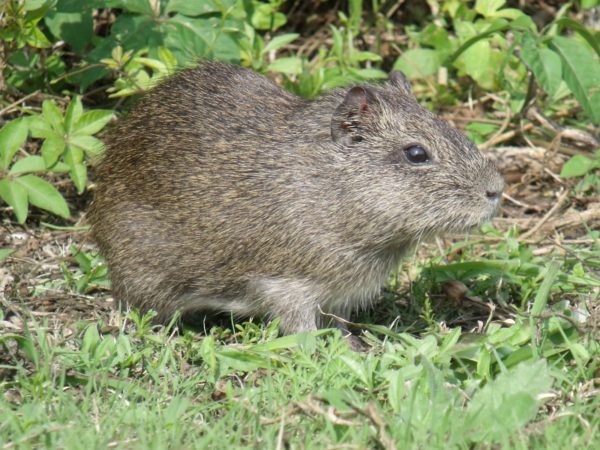
REFERENCE: Cavia are able to endure even slight frosts, usually low temperatures lead to the death of only weakened, sick animals.
How wild guinea pigs live
Cavia are herbivores, most of their life consists of searching for and absorbing plant food. Therefore, guinea pigs live in nature, usually in the area where there is plenty of food suitable for them:
- seeds and cereals;
- various types of wild herbs, flowers;
- roots, branches of shrubs;
- leaves, bark of trees, their fruits.
If the food runs out, or it is not enough to feed the flock, the cavia go in search of a better place, sometimes moving long distances. The life of guinea pigs in the wild is a constant movement forward, exploring new terrain. If necessary, guinea pigs swim across streams, small rivers, but do not have a great love for water. Only some subspecies of cavia settle on the banks of water bodies, feeding on aquatic plants.
IMPORTANT: Wild guinea pigs do not need constant proximity to a body of water to quench their thirst. They have enough moisture obtained from juicy fruits, herbs, as well as dew and raindrops that collect on plants.
Rodents move in small flocks of 10-15 adult females, the leader is always the male. Some females look after the cubs during the day, others look for food and protect the territory, then they change roles. The ability to make piercing sounds allows the pigs to communicate over fairly long distances, warning each other of the approach of the enemy.
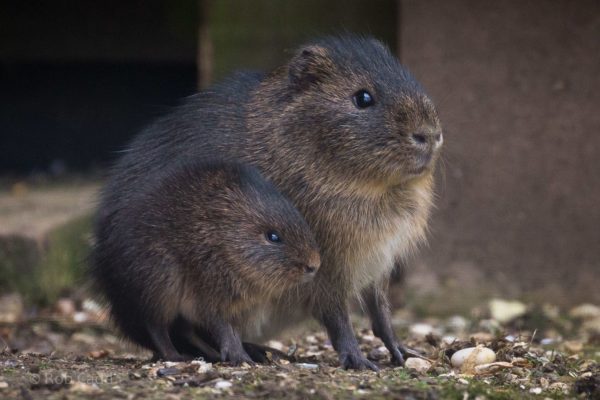
When males from a new generation grow up, an inevitable struggle for power occurs, after which the strongest takes the place of the leader, and the defeated males leave the pack. Also, conflicts with other populations are not uncommon, when there is a struggle for a territory rich in food. But for the most part, Cavia are peaceful, skirmishes rarely happen inside the pack, usually showdown is limited to threatening sounds and movements.
Enemies of guinea pigs in nature
Cavia do not have any means of protection from predatory animals and birds, so their only salvation is to hide well and quickly run away. To hide from the eyes, a rodent can dig a shelter for itself, but Cavia cannot really be called burrowing animals. They prefer to use ready-made shelters – caves and crevices in the rocks, empty holes and hollows of trees.
REFERENCE: One of the effective means of protection in the wild is the absence of smell. Therefore, Cavias take such good care of themselves and their habitat – the smell can show the enemy the way to the mumps’ shelter.
To avoid death, furry rodents leave their shelters mainly at night and at dawn, when most predators are sleeping. Also, the pigs have developed the ability to sleep for 10-15 minutes every few hours, their eyes often remain ajar. The sleeping pig remains in full readiness to escape, therefore it can instantly break away from its place at any sound that speaks of danger.
Due to the abundance of enemies, wild guinea pigs live much less than domestic ones. The life expectancy of cavia varies from one to five years, but due to their high reproductive capacity, population sizes are not reduced. During the year, each female brings up to four litters, each of which has up to eight cubs. Little pigs achieve independence very quickly – after a few days they begin to look for food on their own, and after two weeks they become completely independent.
Video: wild guinea pig
Habitat and lifestyle of guinea pigs in the wild
3.7 (73.6%) 25 votes




